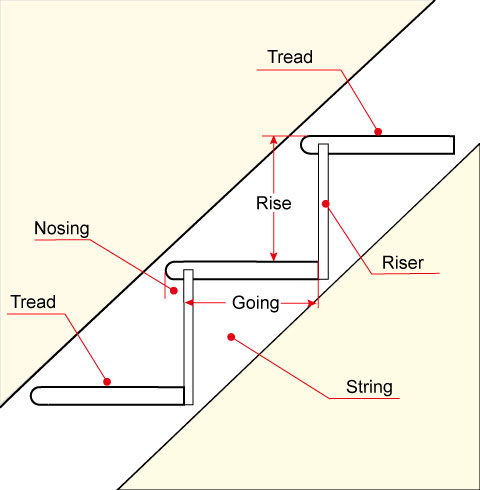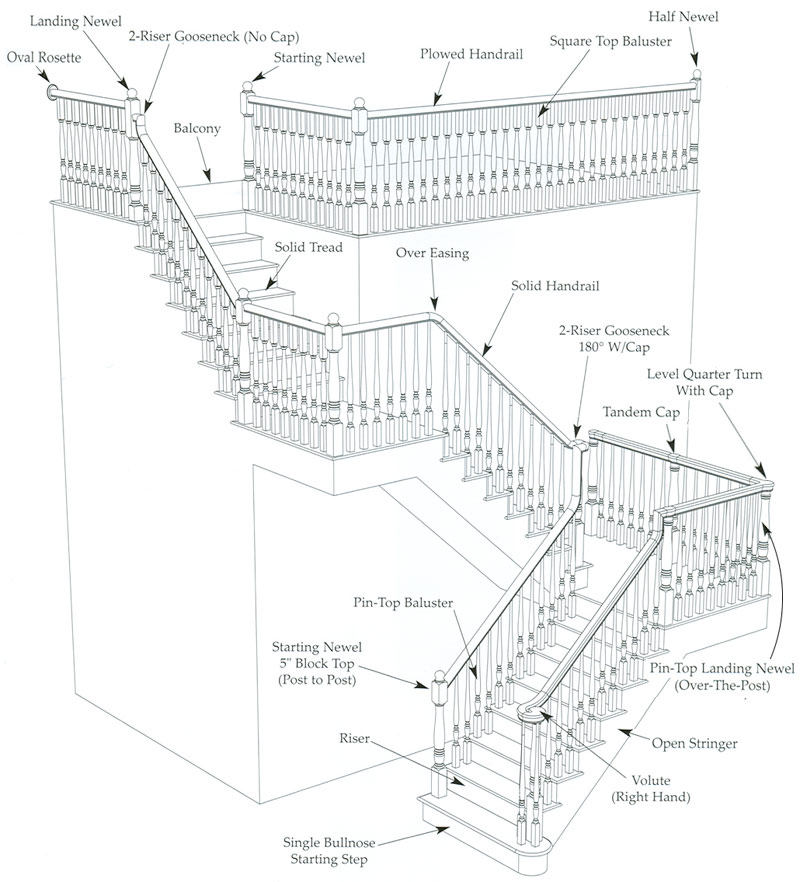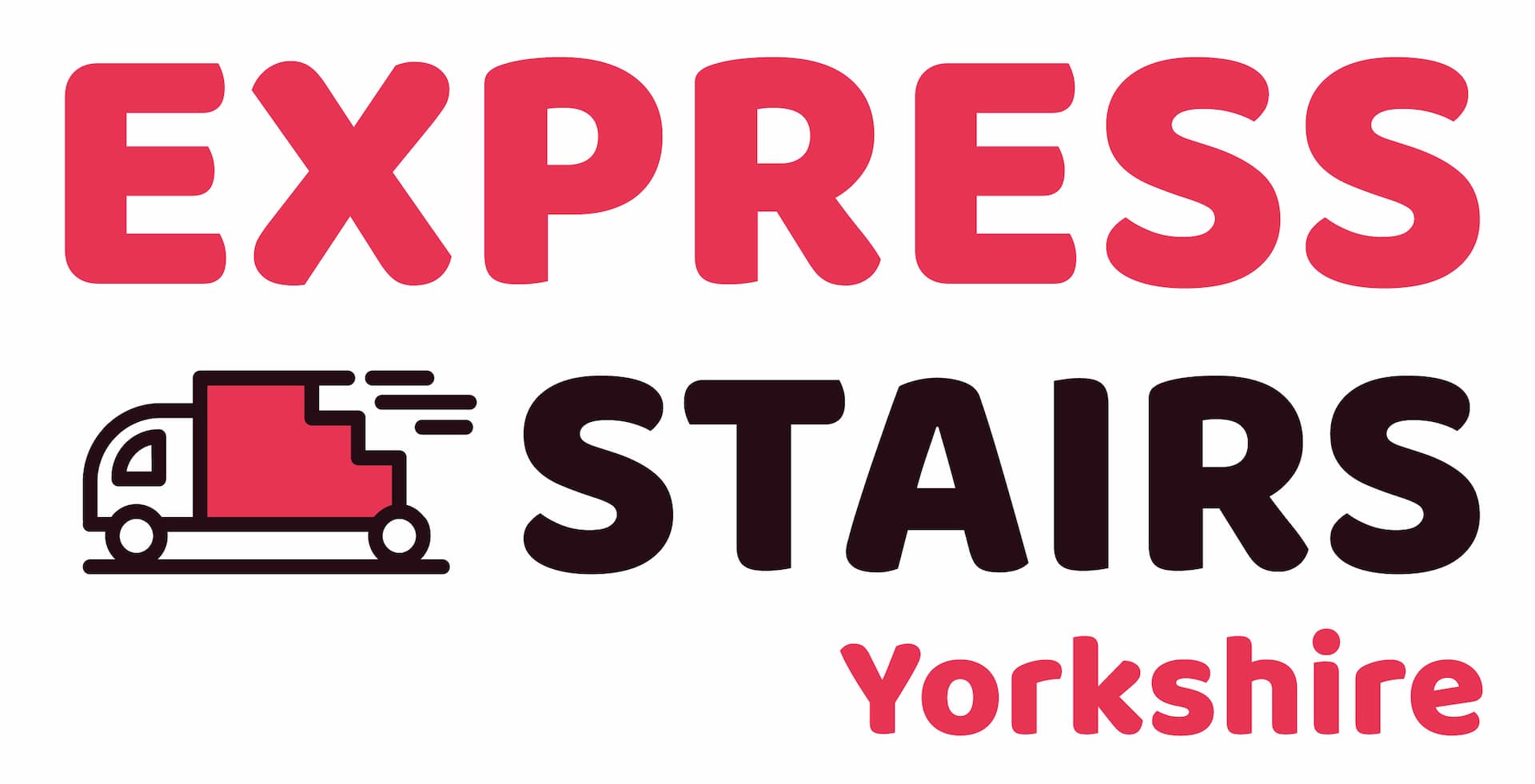Stairs can be manufactured in 24-48 hours. Please email for details. Info@expressstairs.co.uk
Help & Guides
Staircase Terminology
Typical Timber Staircase Components
Stringer (string)
The structural component that houses the staircase treads and risers.
(We finish our strings in 220mm x 32mm 5ths Redwood. We believe the thicker string is better, it looks more attractive, is stronger and gives more room for plaster finish so that the string is not buried behind plaster which can happen with 28mm strings).
Tread
The staircase component that is stepped upon whilst climbing the staircase to bed.
(We finish our treads to a thick standard and only use a minimum 22mm MR MDF).
Go (Going)
The individual going is the dimension taken from face of riser to face of riser.
Riser
The staircase component between each staircase tread, this can be missing but only to suit building control. As in the case of staircase spindles you can only have a maximum gap of 100mm, so care has to be taken when selecting this option.
Rise
The rise is the vertical measurement taken from the top of the tread to top of the tread.
Nosing
The staircase nosing is the front part of the staircase tread that overlaps the staircase riser face. It is usually bull-nosed, this is for both aesthetic reasons and carpet fitting as it stops the carpet splitting on the edge. A staircase nosing can be eliminated if required, please ask for details.
Please note the drawing shown is a cross section through a typical timber staircase.

Staircase Balustrade
Newel Post
The newel post is commonly attached to the staircase, as it allows for stair handrails to be built into them. Sometimes they can be used on landings where you don’t want to miter handrails round corners etc. Half newels are used against walls where you want to attach handrails.
Handrails
Handrails are the timber capping used to house the staircase spindles. These can also be used against the walls carried by metal brackets etc. Continuous handrails can be used as our image shows but are most commonly used between newel posts with the newel posts being around 50mm larger than the top of the handrail for aesthetic reasons. This can be cut higher to suit personal preferences.
Base Rails
Base rails are the timber base plate used to house staircase spindles. The only time the base rail would not be used is when you are producing a cut and metered staircase. At this point, the spindle is commonly dovetailed out of the staircase tread. The image below shows various handrail options.
Coloured
A part of the handrail used in continuous hand railing, (i.e. over the top of newel posts), these are also used on curtailed bottom steps as the image below shows. Volutes may be left hand or right hand depending on the situation in which they are to be used. The balustrade is a means of guarding a staircase for safe use, to stop people, especially children, from falling from heights. This is usually made up of newel posts at the top and bottom of the staircase. Our base rails are grooved over the stair stringer and all spindles and infills are ploughed into hand and base rails. Spindles on the staircase should be a minimum of 900mm up from the pitch line and landing handrail must be a minimum of 900mm from the finished floor height to the top of the handrails. Express Stairs Yorkshire offer a fully assembled handrail set, please contact us for details if this is required.


